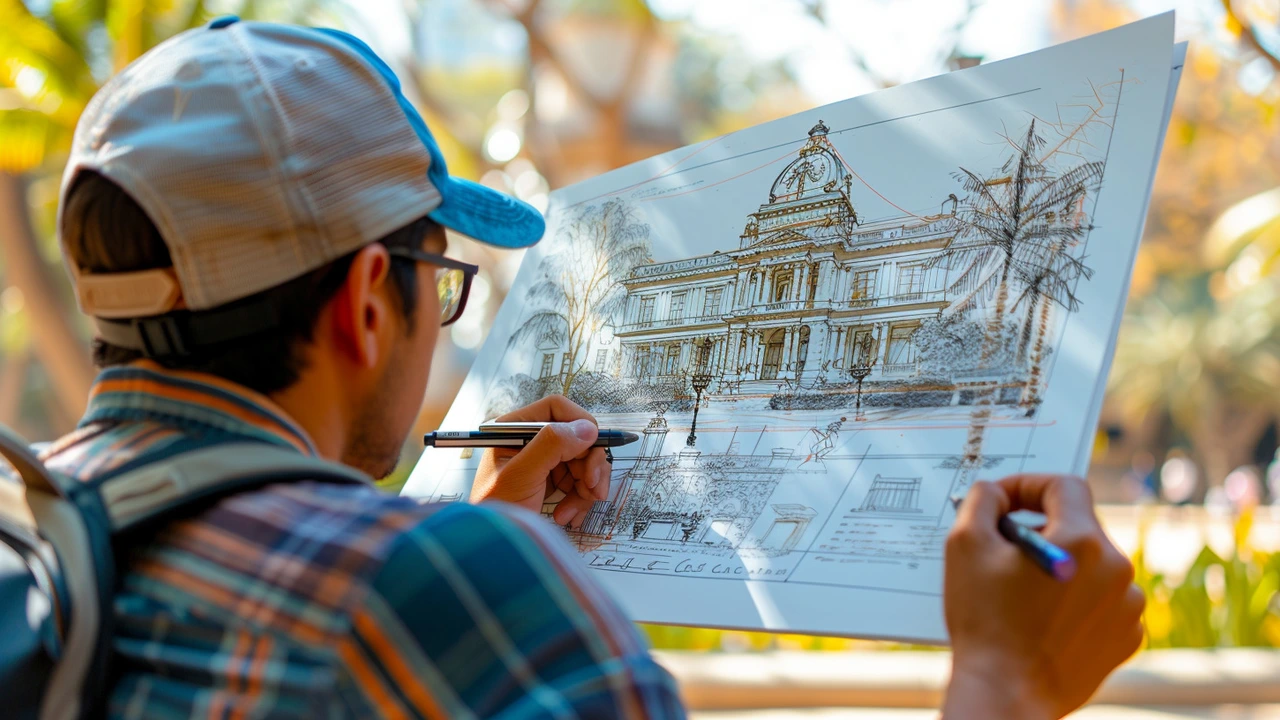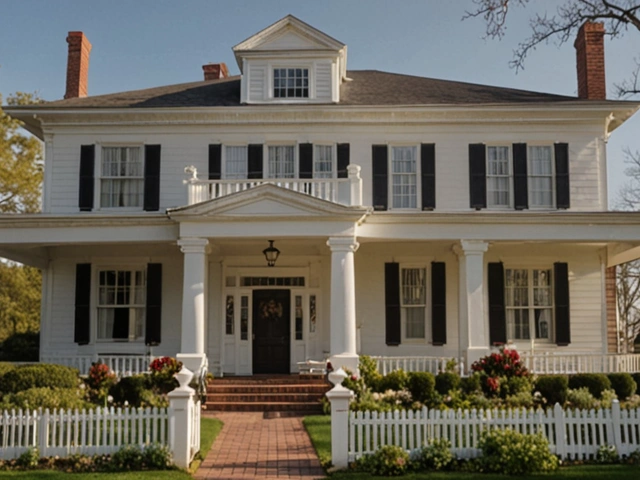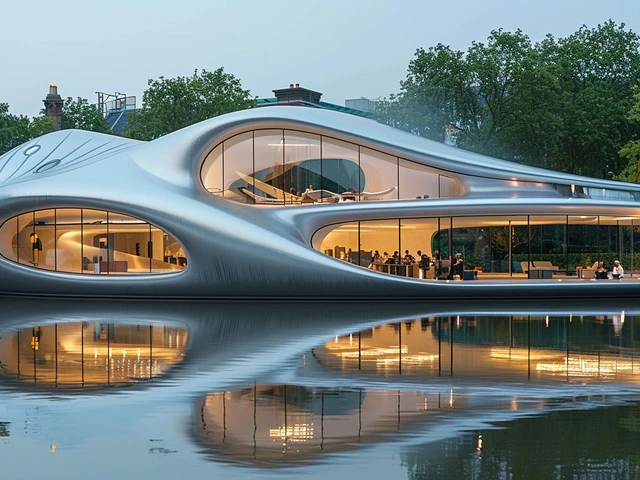The Charm of Colonial Revival Architecture
Have you ever taken a stroll in a quaint New England town and admired those beautiful homes with gabled roofs, symmetrical designs, and elegant doorways? If you're like me, you've likely been enamored by the charm of Colonial Revival architecture. This architectural style, which borrows heavily from the simplicity of colonial American houses, has become popular in the United States for reviving and reinventing tradition in modern times. And who wouldn't fall in love with this architecture? It's as comforting as my Maine Coon cat, Whiskers, purring in my lap on a rainy day.
The Stately Symmetry
We have a saying in my house. Whiskers, my Maine Coon, and I talk about the appeal of symmetry, much like that of a perfectly spun cat's whisker. This is reflected in Colonial Revival architecture, which is defined by its hinged, balanced, and harmonious symmetry. This reflects an aesthetic typical of early American colonial architecture, with a central front door flanked on both sides by an equal number of windows, perfectly balanced to create a sense of tranquility and order. This harmony often extends to other architectural elements such as chimneys, which are also placed symmetrically on the roof. People love this regularity because it projects a sense of stability, like the calm to a storm.
The Revered Rooflines
I once mused about scaling the gabled roof of a Colonial Revival house, only for Whiskers to give me one of those judgemental cat-looks. But can you blame me? These rooftops add a definitive charm to these houses, as they are primarily gabled, with the occasional gambrel or hip roof for slight variation. The roofs are often steep, allowing for efficient water runoff, and have minimal overhang or eaves. While we are most familiar with the shingle and slate roofs, metal roofs are finding their way into more contemporary Colonial Revival homes. The increased longevity and eco-friendliness of metal make it a go-to choice for modern homeowners.
Entrancing Entranceways
The entrance of a Colonial Revival house is as inviting as a bowl of warm soup after a chilly winter walk. Depicted by their stately features, entryways in this architectural style are characterized by decadent doorways, which are usually centrally positioned on the façade. They are often adorned with decorative crown moldings or pediments and are positioned within an elegant porch or covered entryway. This offers a grand welcome into the home and sets the tone for the style and elegance to be found within. It’s an elegant first impression and speaks volumes about what to expect from the home’s interior.
The Captivating Columns
There's something about the columns on a Colonial Revival building that are as captivating as the stripes on a Maine Coon’s tail. Often, these houses feature classic column designs on their porches or porticoes, providing a covered entranceway. Some feature flattened pilasters, mirroring the look of a full classical column. The column, borrowed from Greek and Roman architecture, adds an aura of nobility and grandeur that not all architectural styles can boast about. It also fosters a sense of openness, welcoming visitors in the most noble way. Whether they are grand two-story columns or simple porch supports, they add a touch of nostalgia and historical reverence that makes the Colonial Revival unique.
The Graceful Interiors
Walking into a Colonial Revival home is like walking into a beautifully sorted and stuffed treasure box. The interiors are graced with woodwork, crown molding, and chair rails, adding to the overall elegance and charm. Fireplaces are often the centerpiece of the living room, resembling an old-world charm that harks back to cozy family gatherings in bygone eras. Kitchens, however, often reflect modern tastes. In newer renditions of this architectural style, chefs’ kitchens are typically designed with updated amenities and an open-concept design that still manages to blend seamlessly with the overall traditional aesthetic of the home. Trust me, I'd love nothing more than to be stirring up a large batch of homemade tomato sauce in such a kitchen while Whiskers purrs away at my feet.
The Enduring Popularity
Colonial Revival architecture has remained consistently popular since the late 19th century for several reasons. This could be its perceived appeal of timeless simplicity, its ability to represent historical relevance, or perhaps it's its familiar, comfortable, and traditionally American design. One might argue that, just as comfort food soothes the soul, Colonial Revival architecture soothes the eye. After all, who can resist the allure of a style that blends the best of tradition and modernization?
The Modern Twists
As the world evolves, so does Colonial Revival architecture. Although the fundamental elements remain the same, modern interpretations allow for the integration of contemporary features. For instance, bay windows, skylights, and more open floor plans are common in newer homes. Green building materials and energy-efficient designs are increasingly being adopted, ensuring the architecture’s place in a more sustainable future. It’s an exciting blend of tradition and innovation, much like creating a unique cat toy out of an old ball of yarn for Whiskers to pounce on.
In conclusion, whether you are an architecture aficionado or just someone like me who cherishes the charm of old-world style infused with modern amenities, the Colonial Revival is a true testament to the reinvention of tradition in modern times. Equilibrium, elegance, and architectural richness combine to make it an enduring favorite. So, next time you wander around your neighborhood, enjoy the architectural scenery, and appreciate the Colonial Revival homes peppered around. And if you see a lady walking a Maine Coon on a leash, be sure to stop and say hello to Whiskers and me!





